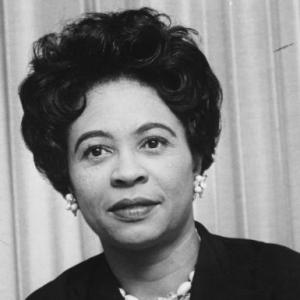
The Court also stated that it was “beyond dispute” that the right was protected from invasion by the states by the Due Process Clause of the Fourteenth Amendment. With Justice Potter Stewart writing for the Court, the justices made clear that the Little Rock ordinances served as a significant barrier to the members of the NAACP who sought to engage in their constitutionally protected right to associate with and share their ideas with their fellow members. The case was argued on November 18, 1959, and a unanimous Court issued its opinion on February 23, 1960. Board of Education, as well as George Howard Jr., who would go on to become the first African-American attorney in Arkansas to be appointed to a federal court. Carter, one of the attorneys who had argued the federal desegregation case of Brown v. There, they were represented by an NAACP legal team that included Robert L. Supreme Court, which agreed to hear the cases. Bates and company next appealed to the U.S. Seaborn Holt dissenting, the convictions were upheld. Attorneys also offered evidence of harassment that had already occurred.įollowing their convictions, Bates and others appealed to the Arkansas Supreme Court, where, by a 5–2 vote, with Justices George Rose Smith and J. At the Bates trial, as well as at most of the others, lawyers for the NAACP introduced evidence that made clear that the city’s efforts had led to a reduction in membership renewals out of fear of harassment and municipal reprisals. After refusing to comply, Bates and others were tried, convicted, and ordered to pay a $25 fine each. While it was not difficult to comply with some parts of the ordinance, Bates and her fellow officials were adamant in their refusal to produce membership lists or dues records.
:max_bytes(150000):strip_icc()/CivilRightsactivistDaisyBates1958-590028955f9b581d5915db42.jpg)
When it came time for the law to be enforced, Daisy Bates (a longtime activist and a veteran of the effort to desegregate Little Rock’s Central High School) and her colleagues, each a keeper of the records of one of the various NAACP chapters, refused to comply fully.

To ferret out the alleged fraud, an ordinance required the nonprofits, among other things, to disclose the names of their members as well the sources of their dues. In Little Rock (Pulaski County), this harassment took the form of an occupational tax, a measure enacted in October 1957 and ostensibly aimed at a group of nonprofits that city leaders claimed were in fact businesses that sought to avoid taxes by assuming the nonprofit label.
#Daisy bates series
It was one of a series of cases that arose when the region’s local white power structure-seeking to fight back against the federal court decisions and black activist–sponsored direct action that threatened to bring an end to the South’s longtime legally mandated Jim Crow practices-undertook harassment campaigns against the civil rights leaders. Supreme Court ruled unconstitutional a number of the state’s local ordinances that had been enacted in an effort to harass and hamper the efforts of the National Association for the Advancement of Colored People (NAACP) and other civil rights advocates. She speaks about aspects of her work in Western Australia and South Australia, her publications, witnessing Aboriginal ceremonies, and her determination to continue her presence among Aboriginal people.Daisy Bates et al. Original recording is on a lacquer disc recording recording of an interview conducted in the Sydney studios of the Australian Broadcasting Commission with Daisy Bates, social worker amongst Aboriginal people and ethnologist. A portion of the recording has not been published for cultural reasons. While the information may not reflect current understanding, it is provided in a historical context. These views are not necessarily the views of the State Library of South Australia.

The recording also contains terms and phrases from earlier eras which reflect attitudes of those times and might cause offence in today's society.

Care and discretion should be used when choosing to listen to the item. This recording contains material which describes Aboriginal people, aspects of Aboriginal culture, and Aboriginal people who have since died. Creator Daisy Bates Additional creator Russell Henderson TitleRadio interview with Daisy Bates interviewer Russell Henderson Date (year)1941 Date recorded 18 February 1941 Description


 0 kommentar(er)
0 kommentar(er)
